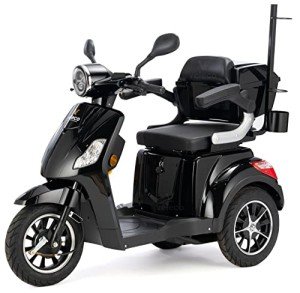Mobility Scooters: A Comprehensive Guide
Mobility scooters have actually become an important mode of transportation for many individuals facing mobility challenges. This article explores the different aspects of mobility scooters, including their types, benefits, functions, and a guide for potential buyers.
Understanding Mobility Scooters
Mobility scooters are electrically powered devices developed for people with restricted mobility. They supply a way of transportation for individuals who may have difficulty walking but still want to retain their self-reliance. They come in numerous styles and features to accommodate a wide variety of needs.
Types of Mobility Scooters
Mobility scooters can generally be classified into three main types:
| Type | Description | Best For |
|---|---|---|
| Compact Scooters | These are small and lightweight, ideal for inside your home and short journeys. | Users with restricted storage space or those who travel typically. |
| Mid-size Scooters | A balance in between mobility and stability, appropriate for both indoor and outside use. | Those who require to cover a variety of terrains. |
| Durable Scooters | Large and robust, designed for rugged outside use and heavier individuals. | Users needing additional weight capacity or going off-road. |
Secret Features of Mobility Scooters
The choice of mobility scooter frequently depends on the functions that line up with private requirements. Here are a few of the key functions to consider:
- Weight Capacity: Mobility scooters include different weight limits. It is essential to select a scooter that can adequately support the user's weight.
- Variety: The range a scooter can take a trip on a single charge varies. Depending upon user needs, one may go with scooters with a series of up to 40 miles.
- Speed: Most mobility scooters can reach speeds in between 4 to 8 miles per hour. Consider what official website is comfy and safe for the designated environment.
- Turning Radius: A compact turning radius is important for indoor usage, permitting for much easier navigation in tight areas.
- Battery Type: The type of batteries utilized can affect the scooter's efficiency. Lead-acid and lithium-ion batteries are the most common.
Benefits of Using Mobility Scooters
The advantages of mobility scooters extend beyond just transportation. Some key advantages include:
- Independence: Users can browse their environment without counting on caregivers, promoting self-reliance and self-confidence.
- Health Benefits: Using a scooter can motivate outdoor activity, leading to physical and psychological health improvements by reducing feelings of isolation.
- Convenience: Scooters can quickly be run in various environments, whether indoors, in mall, or outdoors.
Essential Considerations When Buying a Mobility Scooter
When acquiring a mobility scooter, a number of considerations can help make sure that you choose the ideal design:
Assess Individual Needs:
- Mobility level: Consider how much support the person will need.
- Series of usage: Determine where the scooter will primarily be utilized (inside, outdoors, on rough terrains, etc).
Test Drive:
- Always test drive several designs to find an ideal fit. Pay attention to convenience, ease of steering, and the scooter's responsiveness.
Evaluation Safety Features:
- Look for scooters with appropriate security functions like lights, indicators, and anti-tip styles.
Inspect Warranty and Service Options:
- A reputable guarantee and readily available service choices are crucial for long-term usage.
FAQs about Mobility Scooters
1. How fast do mobility scooters go?Mobility scooters generally have speeds varying from 4 to 8 miles per hour, with many designed for security rather than high-speed travel. 2. Exist weight restrictions on mobility scooters?Yes, mobility
scooters come with specific weight limitations, typically varying from
250 pounds to over 500 lbs, depending on the model. 3. Can mobility scooters be used indoors?Certain models, especially compact scooters, are specifically designed for
indoor usage and are much easier to navigate in tight areas. 4. How often do the batteries require to be replaced?Battery life can vary based upon use, but generally, with correct care, batteries may last between 1 to 3 years before needing replacement
. 5. Are mobility scooters covered by insurance?Coverage can differ, but some insurance coverage strategies, consisting of Medicare and Medicaid, might cover part of the expense. It's suggested to consult private insurance providers. Mobility scooters act as a
valuable tool for numerous individuals, allowing them to keep
their freedom and independence. By comprehending the various types and features of mobility scooters, individuals can make educated decisions customized to their specific needs.
Whether used for errands, interacting socially, or leisurely activities, mobility scooters can improve the quality of life for those with mobility restrictions. Buying a mobility scooter is a choice that can significantly affect an individual's life. For that reason, people should thoroughly examine their alternatives and choose a model that best lines up with their way of life and mobility requirements
.

